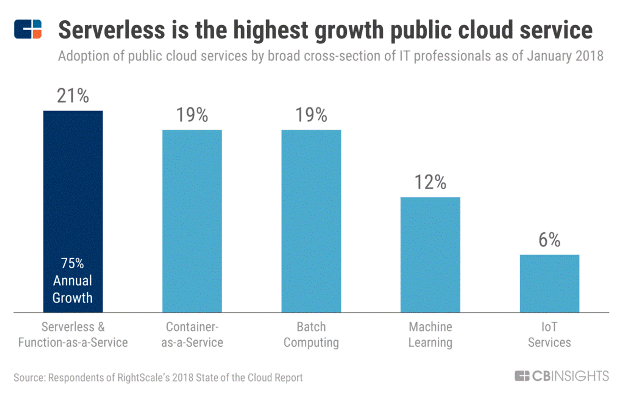
Authored by Sam O'Brien, RingCentral
Once in a while, innovations come along that have a drastic impact on the way we work and live. The personal computer, the internet, and the smartphone are a few examples. Each contributed to the digital explosion by enabling widespread use of computer technology, ushering in the digital age.
Now comes cloud computing (the cloud). The cloud provides businesses with a better way to use communication tools. Businesses have been moving their communication workloads to the cloud for as long as it has been around. Just to give you a sense of the scale of this shift, according to Gartner, the public cloud market was valued at $182.4 billion in 2018.
This migration has led to the development of several technologies. Most notable of which is Unified Communications as a Service (UCaaS). It made cloud-based communication services scalable, easier to manage, and less costly.
UCaaS Brings Everything Together
According to Biztech, more than 85 percent of businesses moved all or part of their communications tools to the cloud via UCaaS. UCaaS looks to be the Swiss army knife application for the cloud. It bands together communications tools (voice, video conferencing, screen sharing, instant messaging, etc.).
What is unified communications? Unified Communications (UC) brings together a variety of communications applications. At its best, UC provides a consistent, unified interface and experience across devices. It does not matter which mode of communication a person chooses to use at a particular time. UCaaS integrates voice, messaging, and collaboration functions. Thus, UCaaS delivers complete, integrated cloud business communications solutions.
Cloud-based unified communications (UC) services offer several advantages (Business Communications Strategies) that include:
- Scalability: UCaaS can be scaled up or down. It is a perfect solution for both large businesses and small to medium-sized enterprises.
- Manageability: UCaaS offers uncomplicated day-to-day management and integration of static and mobile devices.
- Reduced cost: UCaaS platforms are cheaper than onsite hardware or services rented from telecom providers. This translates to savings (in terms of purchase/rental, installation, and operations/energy costs).
SD-WAN A Formidable Tag Team Partner
Unfortunately, UCaaS can’t work alone. The demands real-time communications place on a network can be significant. Without sufficient bandwidth, you will get disruptions like jitters, lag, and dropped connections. This is a problem for businesses that demand optimal efficiency.
Major investments in private networks can solve the problem. But since businesses favor the use of UCaaS to reduce costs in the first place, then this is not an option. Then there are also issues of bandwidth and quality of service (QoS) to contend with. Enter SD-WAN.
SD-WAN, the cloud, and UCaaS were technological advancements that emerged and grew almost overnight. These advancements were a natural fit: like pancakes and butter, or fish and chips.
UCaaS made migration to the cloud attractive for businesses. SD-WAN to optimize that move by emerging as a supplemental networking solution. SD-WAN brings several benefits to a business using UCaaS for cloud-based communications:
- Improved network: UCaaS will not work without an underlying wide area network. If a network’s performance is poor, then UCaaS performance will follow. This is where SD-WAN comes in. An SD-WAN monitors and prioritizes traffic allowing for consistent high-quality throughput. This leads to better UCaaS user-experience. An SD-WAN automatically spots problems and fixes them, so cloud-based solutions perform consistently and with a higher degree of reliability.
- Better routing: Three major factors impact the quality of experience when it comes to QoS in UCaaS: (a) packet loss; (b) jitter; and (c) latency. An SD-WAN with dynamic traffic management and voice packet duplication capabilities addresses these issues. An SD-WAN also provides added features like tunnel bonding and path conditioning. This helps further improve an organization’s ability to manage underlying transport or connectivity quality issues.
- Improved security: We usually associate security with keeping files safe. But improved network security can also enhance the performance of UCaaS. An SD-WAN contributes to improving network security by isolating or segmenting traffic by application. This makes it tougher for threats to figure out the location of core applications. The result is not only a more secure system, but also the ability to optimize UCaaS traffic flows.
A Match Made in (Cloud) Heaven
UCaaS and SD-WAN complement one another to deliver the best cloud-based communications to businesses of all sizes. Huge corporations with many branches and small and medium enterprises all stand to realize the same benefits. Both technologies provide scalability, manageability, cost-efficiency, and improved security that all businesses in this digital age aspire. The era of cloud-based computing is here to stay (at least until another groundbreaking innovation comes around). With UCaaS and SD-WAN, businesses should be able to harness the cloud to the fullest.
Silver Peak was acquired by Aruba, a Hewlett Packard Enterprise Company.





